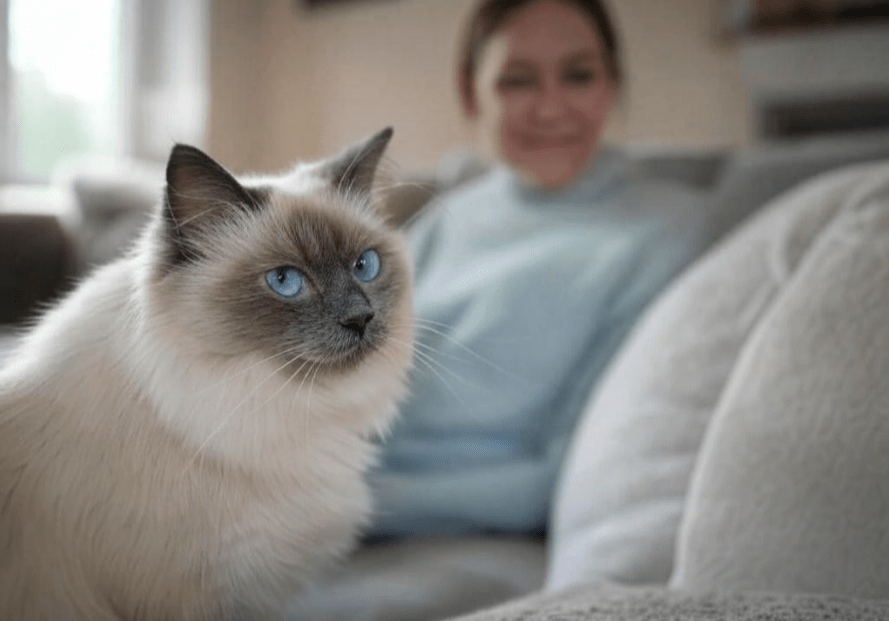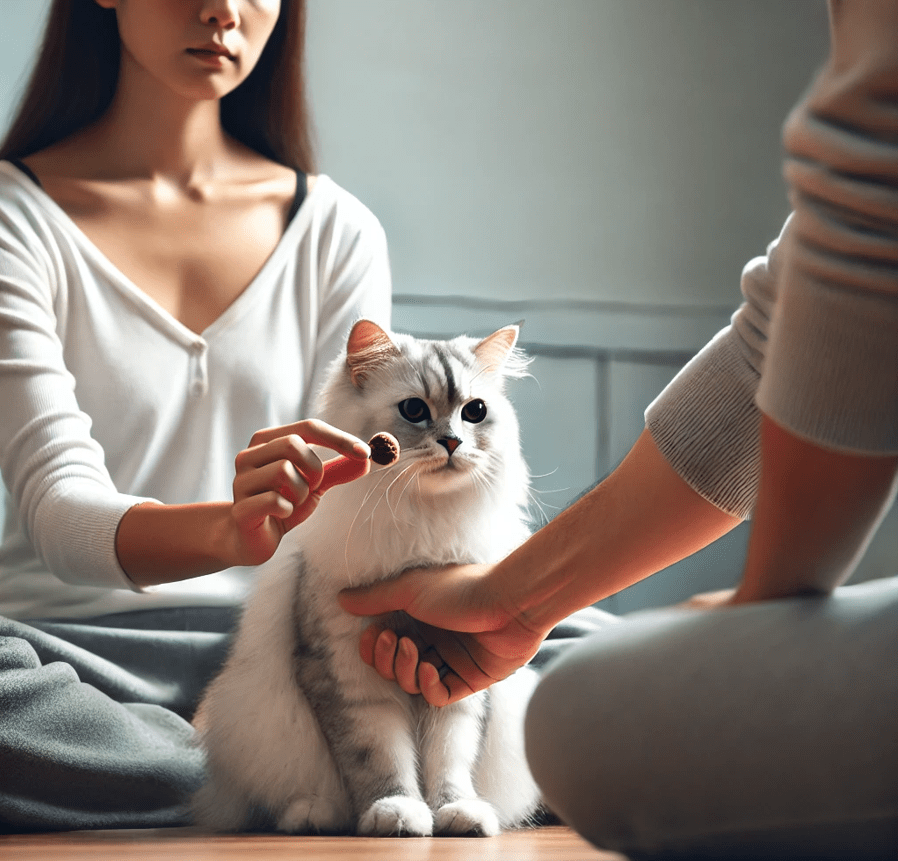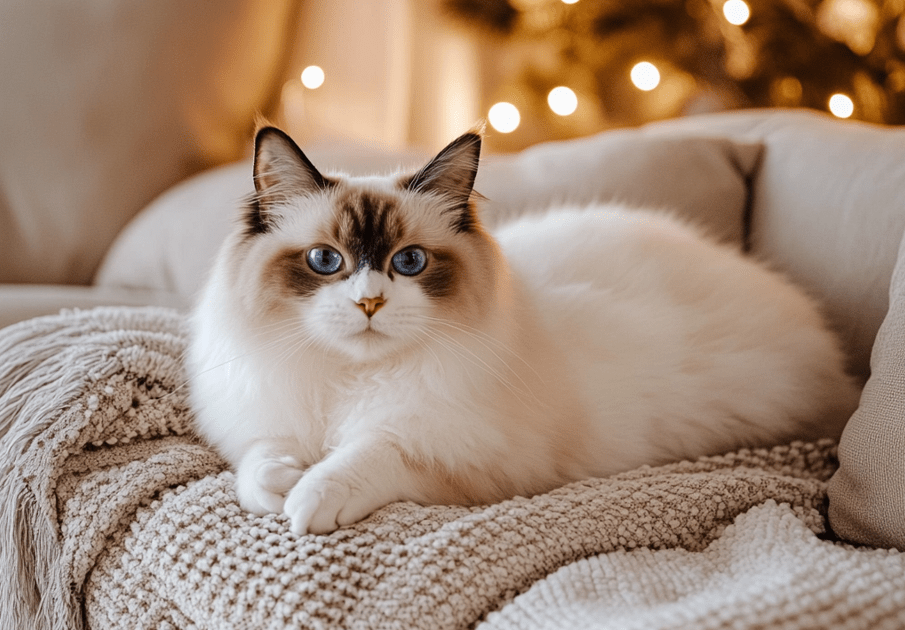
Ragdoll cats, with their striking blue eyes, silky fur, and docile personalities, are a beloved breed known for their gentle and affectionate nature. Creating a Ragdoll-friendly home is essential to ensure these sociable felines thrive in a safe, comfortable, and stimulating environment. This article explores how to design a home that caters to the unique needs of Ragdoll cats, offering practical tips, safety considerations, and enrichment ideas to keep your furry friend happy and healthy. Whether you’re a new Ragdoll owner or looking to optimize your space, this guide is your ultimate resource.
Understanding the Ragdoll Cat’s Unique Needs
Ragdolls are often described as “puppy-like” due to their friendly, laid-back demeanor and tendency to follow their owners around. Named for their habit of going limp when picked up, these cats crave human interaction and flourish in environments that prioritize safety, comfort, and engagement. To create a Ragdoll-friendly home, you must consider their physical, emotional, and social needs:
Gentle Temperament: Ragdolls are calm and non-aggressive, making them sensitive to loud noises or chaotic environments.
Large Size: Ragdolls are one of the larger cat breeds, often weighing 10-20 pounds, requiring sturdy furniture and ample space.
Social Nature: They thrive on companionship and may become lonely if left alone for long periods.
Moderate Activity Level: While not as high-energy as some breeds, Ragdolls enjoy playtime and need mental stimulation.
By tailoring your home to these traits, you can ensure your Ragdoll feels secure and content.
Designing a Safe Ragdoll-Friendly Home
Safety is the foundation of a Ragdoll-friendly home. These curious cats may explore every nook and cranny, so eliminating hazards is crucial.

1. Secure Hazardous Areas
Ragdolls’ trusting nature means they may not instinctively avoid danger. Take these steps to cat-proof your home:
Cords and Cables: Tuck away or cover electrical cords to prevent chewing, which could lead to shocks or injury.
Toxic Plants: Remove or place out of reach plants like lilies, aloe, or pothos, which are toxic to cats.
Small Objects: Store small items like rubber bands, coins, or hair ties that could be swallowed.
Windows and Balconies: Install sturdy screens on windows and secure balconies with netting to prevent falls, as Ragdolls may not have the best balance.
2. Create Safe Zones
Ragdolls love cozy, quiet spaces where they can retreat. Designate safe zones with:
Cat Beds or Blankets: Place soft beds in quiet corners or on elevated surfaces, as Ragdolls enjoy lounging in warm, comfy spots.
Hiding Spots: Provide covered cat beds or cardboard boxes for security during stressful events, like guests or loud noises.
High Perches: Install cat shelves or sturdy perches where your Ragdoll can observe their surroundings, satisfying their curiosity without risk.
3. Maintain a Toxin-Free Environment
Household products can pose risks. Ensure a Ragdoll-friendly home by:
Using Pet-Safe Cleaners: Opt for non-toxic cleaning products, as Ragdolls may walk on surfaces and groom themselves afterward.
Storing Chemicals Securely: Keep detergents, antifreeze, and medications in locked cabinets.
Checking Litter Safety: Use dust-free, non-clumping litter to avoid respiratory issues or ingestion risks.
By proactively addressing safety, you create a worry-free environment for your Ragdoll to explore.
Comfort and Coziness for Your Ragdoll
Ragdolls are all about comfort. Their plush coats and love for lounging make a cozy home essential.
1. Provide Plush Bedding
Ragdolls adore soft surfaces. Invest in:
High-Quality Cat Beds: Choose beds with memory foam or plush materials that support their larger frames.
Heated Beds: In colder climates, heated cat beds can keep your Ragdoll warm and cozy.
Blankets: Place washable blankets on furniture where your Ragdoll likes to nap, protecting your upholstery while offering comfort.
2. Optimize Temperature
Ragdolls prefer warm environments due to their thick coats. Maintain a home temperature between 68-78°F (20-26°C) and provide sunny spots or heated pads for lounging. In hot climates, ensure access to cool, shaded areas and fresh water to prevent overheating.
3. Create a Quiet Atmosphere
Given their gentle nature, Ragdolls are sensitive to loud noises. Minimize stress by:
Reducing Noise Pollution: Place their bed or safe zone away from noisy appliances like washing machines.
Using White Noise: A white noise machine can mask sudden sounds, creating a calming environment.
Gradual Introductions: If introducing new pets or people, do so slowly to avoid overwhelming your Ragdoll.
Enrichment for a Happy Ragdoll
While Ragdolls aren’t as high-energy as breeds like the Bengal, they still need mental and physical stimulation to prevent boredom or stress.

1. Interactive Toys
Ragdolls enjoy toys that mimic prey or engage their hunting instincts. Consider:
Feather Wands: These encourage pouncing and jumping, providing exercise and bonding time.
Puzzle Feeders: Stimulate their minds by hiding treats in puzzle toys, encouraging problem-solving.
Laser Pointers: Use sparingly to avoid frustration, as Ragdolls may chase the dot enthusiastically.
2. Scratching Posts and Climbing Structures
Ragdolls need outlets for their scratching instincts and love to climb. Provide:
Sturdy Scratching Posts: Choose tall, stable posts covered in sisal or carpet, as Ragdolls’ large size requires durability.
Cat Trees: Multi-level cat trees with platforms allow climbing and lounging, catering to their love of heights.
Wall-Mounted Shelves: Create a “cat highway” with shelves for exploration, ensuring they’re securely anchored.
3. Social Interaction
Ragdolls thrive on human connection. Incorporate daily interaction:
Play Sessions: Dedicate 15-20 minutes daily to interactive play, strengthening your bond.
Grooming Time: Regular brushing not only keeps their coat healthy but also serves as a bonding activity.
Companionship: If you’re away often, consider a second pet (after careful introductions) to keep your Ragdoll company.
4. Window Views
Ragdolls love watching the world. Place a cat tree or perch near a window for “cat TV,” where they can observe birds or outdoor activity. Install a bird feeder outside to enhance the experience, but ensure windows are secure.
Nutrition and Feeding Stations
A Ragdoll-friendly home includes a well-thought-out feeding area that promotes health and comfort.
1. Choose the Right Food
Ragdolls benefit from high-quality, protein-rich diets tailored to their size and activity level. Consult your vet for recommendations, but consider:
Wet Food: Provides hydration and supports urinary health, crucial for larger breeds.
Dry Food: Convenient for grazing, but ensure it’s formulated for indoor cats to prevent weight gain.
Portion Control: Ragdolls can be prone to obesity, so follow feeding guidelines and monitor their weight.
2. Set Up a Feeding Station
Create a dedicated feeding area that’s clean and accessible:
Elevated Bowls: Raised bowls reduce strain on their neck and joints, especially for older Ragdolls.
Non-Slip Mats: Place a mat under bowls to catch spills and keep the area tidy.
Quiet Location: Position the feeding station away from high-traffic areas to reduce stress during meals.
3. Ensure Fresh Water
Ragdolls need constant access to clean water. Use a pet fountain to encourage drinking, as running water is more appealing and supports kidney health.
Litter Box Setup for Ragdolls
A clean, accessible litter box is non-negotiable in a Ragdoll-friendly home.
1. Choose the Right Box
Ragdolls’ large size requires spacious litter boxes. Opt for:
Extra-Large Boxes: Ensure they can turn around comfortably.
Low-Entry Boxes: For kittens or senior Ragdolls, low sides make entry easier.
Covered vs. Uncovered: Some Ragdolls prefer privacy, while others dislike enclosed boxes. Test both to see what your cat prefers.
2. Placement Matters
Place litter boxes in quiet, low-traffic areas, but avoid cramped spaces like closets. Follow the “n+1” rule: one litter box per cat, plus one extra. For a single Ragdoll, two boxes in different locations are ideal.
3. Maintenance
Ragdolls are fastidious. Scoop daily, change litter weekly, and clean the box with mild soap monthly to keep them happy.
Grooming and Health Considerations
Ragdolls’ semi-long coats require regular care to prevent matting and hairballs.
1. Grooming Routine
Brushing: Brush 2-3 times weekly with a stainless steel comb or slicker brush to remove loose fur.
Nail Trimming: Trim nails every 2-3 weeks to prevent overgrowth.
Dental Care: Brush their teeth weekly or provide dental treats to maintain oral health.
2. Veterinary Care
Schedule annual vet visits to monitor for common Ragdoll health issues, like hypertrophic cardiomyopathy (HCM) or urinary tract problems. Keep vaccinations and parasite prevention up to date.
Adapting Your Home for Ragdoll Life Stages
Ragdolls’ needs evolve with age, so your home should adapt accordingly.
Kittens (0-1 Year)
Extra Supervision: Kittens are curious and prone to mischief. Secure cabinets and remove small objects.
Soft Toys: Provide safe chew toys to soothe teething.
Training: Introduce scratching posts early to establish good habits.
Adults (1-7 Years)
Enrichment: Maintain a balance of play and rest to keep them engaged.
Weight Management: Monitor diet to prevent obesity, common in adult Ragdolls.
Seniors (8+ Years)
Accessibility: Add ramps or steps to help them reach favorite spots.
Comfort: Provide orthopedic beds for joint support.
Health Monitoring: Watch for signs of arthritis or dental issues and adjust care as needed.
Common Mistakes to Avoid
When creating a Ragdoll-friendly home, steer clear of these pitfalls:
Ignoring Safety Hazards: Failing to cat-proof can lead to accidents.
Neglecting Enrichment: Boredom can cause stress or destructive behavior.
Overfeeding: Excess weight strains their joints and heart.
Inadequate Litter Boxes: Too few or small boxes can lead to accidents.
Final Thoughts

Creating a Ragdoll-friendly home is about understanding and catering to their gentle, affectionate nature. By prioritizing safety, comfort, enrichment, and health, you can provide an environment where your Ragdoll thrives. From cozy beds to stimulating toys and secure spaces, every detail matters in ensuring your feline friend feels loved and secure. With these tips, you’ll not only meet your Ragdoll’s needs but also deepen the bond you share, making your home a true haven for your furry companion.
For more personalized advice, consult your veterinarian or a feline behaviorist to tailor your home to your Ragdoll’s unique personality. Here’s to a happy, healthy life with your Ragdoll!




